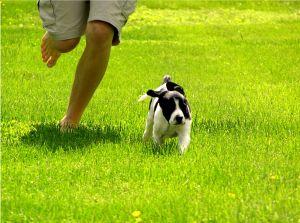The proposed Greenways would bring a wide range of benefits to the Twin Cities. The primary benefits are described briefly below. For more detail on some of the benefits, click on the blue headings. And if you think we’re missing something, let us know in the Forms page.
Connecting Regional Trails & Parks
The Twin Cities already boasts a phenomenal system of parks and trails. Why do we need more? The logic of the proposed routes is to build from what already exists, fill in critical gaps, and make connections that will enhance the entire system. For example, the University Corridor would fill in the last missing link to connect the Gateway Trail to the Luce Line Trail- thus creating a continuous east-west regional trail over 100 miles long. Click here for more details on how access to trails & parks would be improved by the proposed Greenways.
Catalyzing Neighborhood Revitalization
The Midtown Greenway has been a powerful catalyst for high-quality, transit-friendly development. In the past 5 years, over $150,000,000 has been invested in new residential developments along the 5-mile Midtown Greenway corridor. While the dynamics of each neighborhood will be unique, there’s no doubt that the addition of a Greenway can help spur redevelopment of vacant and underutilized land.
Increasing Property Values
Milwaukee Avenue is a perfect example of how design can add value to a neighborhood. The redesign of Milwaukee Avenue contributed to the overall revitalization of the Seward neighborhood. Even today, homes on Milwaukee Avenue are worth more than nearby homes on typical streets. Similarly, homes along parkways enjoy an advantage over other homes. The proposed Greenways would provide renters and homeowners with a unique opportunity to live on a parkway, a lifestyle in high demand.
Protecting the Environment
Every time a commuter makes the switch from driving to cycling, there is a benefit to the environment. A commuter making a 4-mile round trip by bike rather than car keeps approximately 15 pounds of pollutants out of the air. This is good for urban air quality, and has a broader impact on our climate. By making bicycling an attractive option for thousands of commuters who currently drive, Greenways will help individuals and cities reduce our environmental impact. (source)
Whether they’re used for cycling, rollerblading, walking, or running – Greenways encourage folks to get out and move. Getting fit and staying fit is much easier in an environment that builds physical activity into the daily routines of commuting to work, running errands, and visiting the nearest park or restaurant.
Improving Public Health
Creating Venues for Public Art
The creation of Greenways will open new doors for public art. Greenways and public art are a natural combination, because cyclists and pedestrians are moving slowly enough to observe and appreciate works of art. And public art will be central to giving each Greenway a unique identity, and instrumental in signifying key Greenway entrances and intersections.
Managing Stormwater
By improving our stormwater management systems, we can reduce the pollution that reaches our lakes and rivers, and lower the risk of flooded basements. Greenways would help achieve both of these goals by eliminating hard surfaces wherever streets are converted to parks, and by providing green space that could be used for rain gardens.
Creating Safe Routes to Schools
As the percentage of students who bike or walk to school has dropped, the rate of childhood obesity has risen dramatically. Activity helps kids stay healthy, and also improves focus and school performance.
Helping Families Save Money
Owning, maintaining, insuring, and fueling a car is expensive. For many households, transportation is the second-largest expense after housing. When budgets are stretched, economical transportation options can be a vital part of making ends meet. Switching from driving to biking, even for two or three seasons, can save families thousands of dollars each year.
Supporting Local Businesses
By helping thousands of individuals in our region spend a little less on gasoline, the proposed Greenways would help keep millions of dollars circulating in our local economy, supporting local businesses.
Attracting Tourism
The Twin Cities is already a fantastic place to visit, with outstanding museums, parks, theaters, shopping, and restaurants. Creating a unique, world-class bike trail system would provide yet another reason to visit, making our region even more magnetic for convention planners and tourists alike.
Adding it all up:
In order to address climate change, urban air quality, the epidemic of inactivity, traffic congestion, and eroding property values, cities need to find new solutions, particularly in the arena of transportation policy. A successful Greenways Initiative will not only benefit the Twin Cities, it will also serve as a model for other urban areas nationally and around the world that are grappling with the challenges of sustainable growth. By being an innovater, the Twin Cities can enhance its competitive advantage and grow as a sustainable leader.


